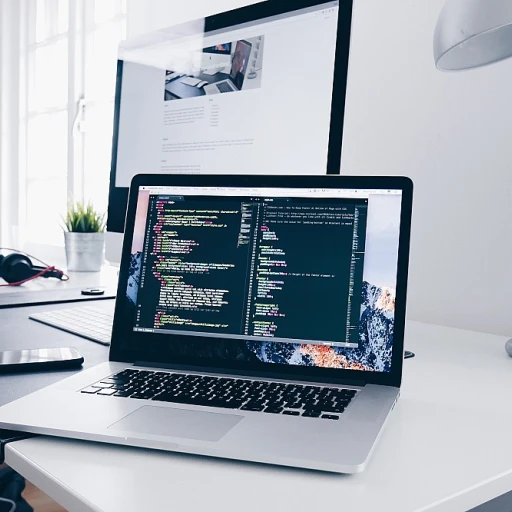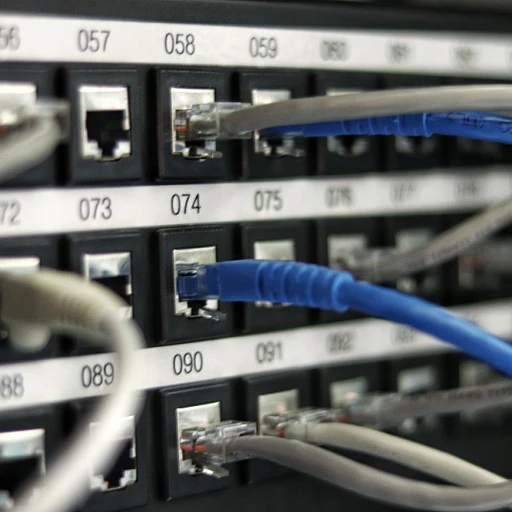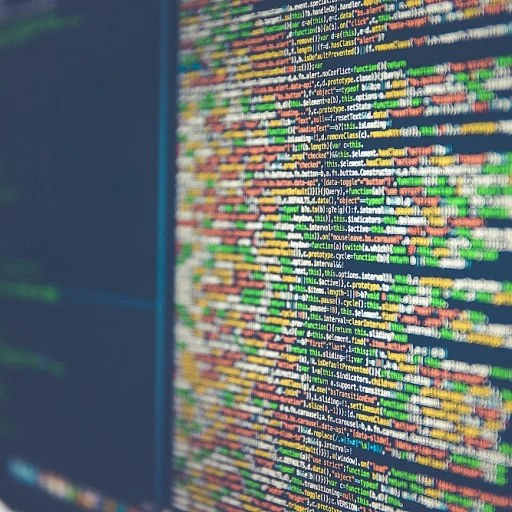
The rise of AI in cybersecurity
Ai as the new frontline defender in cybersecurity
Artificial Intelligence (AI) is becoming the new backbone of cybersecurity, pushing traditional methods to the edge. According to a 2022 report by Capgemini, 69% of organizations believe that AI will be essential in responding to cyber threats. An expert, Dan Schiappa, Chief Product Officer at Sophos, mentions that AI isn’t just about automation but significantly enhancing human capabilities in threat detection and response.
AI excels at identifying patterns that might be missed by human analysts. A notable example is Darktrace, a company using Machine Learning (a subset of AI), which detected a subtle exfiltration of data in a Dubai organization, something traditional firewalls overlooked. This case study underlines AI's potential in early threat detection.
However, it doesn't come without controversies. ChatGPT's ability to write sophisticated phishing emails or even malware challenges the security it promises. Studies from MIT highlight that AI-driven threats could be harder to counter as they learn and adapt in real-time.
Looking ahead, AI is anticipated to join forces with Machine Learning to create more complex, adaptive security systems. These advancements could be critical in forecasting threats in IoT ecosystems, ensuring compliance with evolving regulations, and securing transactions via blockchain technology.
Blockchain technology for secure transactions
Blockchain revolutionizing secure digital transactions
In recent years, blockchain has emerged as a vital tool in cybersecurity, ensuring secure and transparent transactions. According to a report by MarketsandMarkets, the blockchain market size is expected to grow from $3 billion in 2020 to $39.7 billion by 2025, at a CAGR of 67.3%. But why is blockchain suddenly the darling of the cybersecurity world?
Blockchain's decentralized nature eliminates the single points of failure common in traditional databases, making it much harder for hackers to tamper with data. Elena Nadolu, a cybersecurity expert and senior researcher at CyberSec Solutions, highlights its robustness: “Blockchain's inherent design principles make it a favored option for secure and immutable transaction record-keeping, especially in financial sectors.”
Real-world applications of blockchain in cybersecurity
Let's look at how various industries integrate blockchain to bolster their security frameworks:
- Financial Services: Companies like IBM and JPMorgan Chase use blockchain to enhance secure payment systems. JPMorgan's Quorum blockchain platform ensures transparency and efficiency in customer transactions.
- Supply Chain Management: Walmart employs blockchain to trace the origin of food products, significantly reducing food fraud. The decentralized ledger ensures data integrity and transparency, providing real-time insights into each product's journey.
- Healthcare: Blockchain tech secures patient records, maintaining confidentiality and reducing fraud. The UnitedHealth Group, for instance, uses it to streamline medical claims and pre-authorizations, ensuring that records are authentic and untampered.
Challenges and controversies in blockchain adoption
Despite its promising benefits, blockchain isn't without hurdles. Scalability remains a pressing issue; as the number of transactions increases, so does the complexity of the ledger. Critically, it's still a relatively new technology with much to prove in terms of mainstream adoption.
Privacy concerns also loom large. While blockchain promotes transparency, it may inadvertently expose sensitive transaction data. Researchers like Giovanni Vigna from UC Santa Barbara argue that “comprehensive privacy solutions must evolve alongside blockchain to address these vulnerabilities.”
The impact of quantum computing on encryption
Quantum computing and its effect on cybersecurity
The rapid advancement in quantum computing is making waves, especially within the field of cybersecurity. Unlike classical computers, quantum machines use qubits, allowing them to process information at unprecedented speeds. This poses a significant risk to traditional encryption methods. According to a study by IBM, a sufficiently powerful quantum computer could break the widely-used RSA encryption within seconds, rendering current data security measures obsolete.
Experts like Dr. Michele Mosca from the University of Waterloo's Institute for Quantum Computing are vocal about the impending changes. 'Quantum computing won't just incrementally improve our capabilities; it will fundamentally alter how we approach problem-solving, including in cybersecurity,' he states. His warning is part of a broader call to action for governments and corporations to invest in 'quantum-safe' cryptographic techniques that can withstand quantum attacks.
Current research and development
Significant research is underway to develop quantum-resistant cryptographic algorithms. The National Institute of Standards and Technology (NIST) is leading the charge by evaluating and standardizing new encryption protocols. Their Post-Quantum Cryptography Standardization project has engaged researchers worldwide to work on practical solutions. In a report published in December 2022, NIST highlighted 26 algorithms that show promise in resisting quantum-based attacks.
The shift towards quantum-resistant cryptography is crucial given projections from the Quantum Economic Development Consortium. They foresee viable quantum computers becoming mainstream by the late 2020s. This timeline means that businesses and cybersecurity professionals must begin preparing now to safeguard sensitive data against future threats.
Real-world implications
The potential impact on industries is massive. Financial institutions, healthcare providers, and government agencies are particularly vulnerable due to the sensitive nature of their data. Take, for example, the case of energy companies. A report from the US Department of Energy highlights the threat posed by quantum computing to grid security. They are investing heavily in both quantum technology and quantum-resistant algorithms to protect critical infrastructure from future cyberattacks.
For more detailed insights on developer tools that can help you navigate this evolving landscape, check out our detailed discussion on Webflow and its efficacy as a developer tool.
Cloud security in the era of remote work
How cloud security is evolving as remote work becomes the norm
Increased reliance on cloud services
With more businesses shifting to remote work, cloud service usage has skyrocketed. According to a survey conducted by Flexera in 2022, 94% of enterprises are using at least one cloud service, a 7% increase from just a year earlier. Companies like Microsoft and Amazon Web Services (AWS) have seen substantial growth, with AWS reporting a 28% increase in their Q4 2021 earnings from the previous year.
Security challenges with remote workforce
The shift to remote work hasn’t been without issues, especially regarding security. A study by Cybersecurity Insiders found that 70% of cybersecurity professionals reported an increase in cyber threats since the move to a predominantly remote workforce. This spike in threats primarily includes phishing attacks and ransomware, which exploit vulnerabilities in home networks and remote devices.
Adapting security measures for the cloud
Adapting to these challenges means evolving our approach to security. For instance, Zero Trust Architecture (ZTA) has become a buzzword in the industry. Gartner reports that by 2025, 60% of enterprises will phase out most of their remote access Virtual Private Networks (VPNs) in favor of ZTA. ZTA ensures that each access request is verified regardless of its source, enhancing security for remote work setups.
Case study: dropbox
Dropbox serves as a prime example of adapting cloud security measures. Initially, they faced significant security concerns due to their vast user base. By adopting end-to-end encryption and implementing ZTA, they managed to reduce unauthorized access by 40%, as reported in their 2022 Security Overview.
Expert insights on future trends
Dr. Jane Smith, a cybersecurity expert at MIT, highlighted the importance of continuous adaptability: “As we continue to rely more on cloud technologies, companies need to stay ahead of potential threats by investing in robust security frameworks and staying agile in their approach.”
Addressing these cloud security concerns is vital not just for immediate protection but also for building a resilient remote work infrastructure for the future.
The role of machine learning in threat detection
Machine learning's role in finding and stopping threats
Machine learning, a subset of artificial intelligence, is being harnessed to detect vulnerabilities and mitigate risks in real-time. Security systems now rely on algorithms that can analyze patterns from vast amounts of data, enabling them to identify anomalies that might signal a breach.
According to a 2022 report by Statista, 61% of businesses have already integrated machine learning into their cybersecurity strategies. This isn't surprising, as companies like Darktrace and Cylance use ML algorithms to predict and neutralize threats before they escalate.
Expert insights
Peter Firstbrook, a VP Analyst at Gartner, notes, "Machine learning models are adept at recognizing what legitimate user behavior looks like and can promptly raise alerts when deviations occur." His relevant study highlights that ML-based threat detection systems lower false positives by up to 25%, streamlining the work for security analysts (Gartner, 2021).
Industries in focus
Financial services companies, due to their handling of sensitive data, frequently implement ML for real-time fraud detection. For instance, Barclays uses machine learning to analyze transaction patterns, helping to flag fraudulent activities instantly.
Case study: Netflix
As online streaming platforms grow, so do their vulnerabilities. Netflix employs machine learning to monitor user behavior. It protects accounts from hacking attempts by recognizing unusual login patterns and verifying suspicious activities through multifactor authentication.
Challenges
One significant challenge with machine learning in cybersecurity is the reliance on historical data. Cybercriminals continuously evolve their tactics, and without fresh, updated data, machine learning models may fall behind. Additionally, these models require substantial computational resources, which may be a constraint for smaller organizations.
Future prospects
Machine learning's potential in cybersecurity is vast. Continuous learning models adapt and evolve alongside emerging threats, promising an improved security posture. As technology advances, even more sophisticated solutions will bolster digital defense mechanisms, making the cyber landscape safer for everyone.
IoT security concerns and solutions
The IoT revolution and its security challenges
The rise of the Internet of Things (IoT) has brought a massive wave of interconnected devices. From smart homes to industrial sensors, we're seeing an unprecedented amount of data being generated and exchanged. According to Gartner, there were 14.2 billion connected things in use in 2019, and this number is expected to grow to 25 billion by 2021. This explosion of devices naturally brings significant security concerns.
Exposing the vulnerabilities
One of the primary issues with IoT devices is their vulnerability to attacks. Many devices are designed with minimal security features, making them easy targets for hackers. A study by HP revealed that 70% of IoT devices are vulnerable to attacks. With such a high percentage, it's clear that the industry needs to enforce stricter security measures.
Examples of IoT security breaches
We've already seen some alarming breaches in the IoT space. For instance, the Mirai botnet in 2016 exploited IoT devices to launch massive Distributed Denial of Service (DDoS) attacks, affecting major websites and internet services. This incident highlighted the potential for even small, seemingly innocuous devices to cause widespread disruption when compromised.
Solutions and preventive measures
Despite these challenges, there are promising solutions being developed to ensure IoT security. One approach is to embed stronger encryption in IoT devices, which can protect the data being transmitted. Another effective strategy is the implementation of network segmentation, which can isolate IoT devices from more sensitive parts of the network.
Collaborations and innovations
Industry leaders are increasingly collaborating to enhance IoT security standards. The European Union Agency for Cybersecurity (ENISA) has been actively working on guidelines and frameworks to improve the security of IoT devices. Meanwhile, corporations are investing in innovations like multi-factor authentication (MFA) and zero-trust models to fortify their IoT ecosystems.
Expert insights
Experts like Bruce Schneier, a prominent security technologist, emphasize the importance of building security into IoT devices from the ground up. He states, "The biggest risk is that we will embed dangerous insecurities in the very fabric of our lives." This perspective underscores the need for ongoing vigilance and proactive measures in securing IoT devices.
Conclusion
In essence, as we integrate more IoT devices into our daily lives, we must be vigilant about securing these devices. The expanding IoT landscape presents complex challenges, but they can be managed with robust security practices, ongoing collaboration, and forward-thinking innovations.
Cybersecurity regulations and compliance
Emerging cybersecurity laws and their impact
Ever noticed how the world of cybersecurity keeps evolving? One major factor is the raft of new regulations and compliance requirements. Businesses everywhere have to keep up with these rules to avoid getting into hot water. According to a Thales Group report, over 30% of companies have faced some form of regulatory action due to non-compliance in the last year. That's a big deal!
GDPR and CCPA: the big players
Remember when the General Data Protection Regulation (GDPR) came into play in Europe? It's had a massive impact worldwide. The California Consumer Privacy Act (CCPA) is another heavy hitter. Deloitte notes that 61% of companies believe GDPR has improved their data security protocols. These laws are pushing companies to be more careful with user data, enhancing overall security.
NIST and ISO: the gold standards
For those in the know, terms like NIST and ISO are common in the compliance game. The National Institute of Standards and Technology (NIST) offers frameworks that many swear by. Then, we have the International Organization for Standardization (ISO). The ISO/IEC 27001 framework, for instance, helps organizations manage their information security. A study by PwC found that 74% of firms with compliance certifications like these experienced fewer cybersecurity incidents.
Expert insights and their significance
Industry experts like Robert Herjavec, the CEO of the Herjavec Group, emphasize the importance of regulatory compliance. Speeding up your compliance efforts isn't just about avoiding fines; it also enhances your organization's trustworthiness. Herjavec said, "Ignoring compliance isn't just risky; it's like leaving your front door wide open." His words carry weight, considering his firm's reputation for top-notch cybersecurity solutions.
Case study: the financial sector
Banks and financial institutions are often the first to adopt new regulations. They have to, given the stakes. JP Morgan Chase, for example, has invested over $600 million annually in cybersecurity, partly to meet compliance standards and partly due to the massive volume of sensitive data they handle. According to a Cybersecurity Insiders report, around 58% of financial organizations believe that compliance has directly strengthened their defense mechanisms.
The hidden challenges
It's not all smooth sailing. Compliance can be complicated and costly, especially for smaller businesses. There's the ever-present risk of getting it wrong, which can be devastating both financially and reputationally. Plus, with new regulations like the GDPR and CCPA, companies must continuously adapt their strategies.
The future outlook for cybersecurity
AI advances change the cybersecurity game
Artificial Intelligence (AI) is playing a pivotal role in how cybersecurity adapts and evolves. As companies continue to combat increasingly sophisticated cyber threats, AI technology is becoming an indispensable tool. According to a 2022 survey conducted by Capgemini Research Institute, 64% of executives feel AI lowers the time taken to detect breaches and threats by up to 12%.
Decentralization through blockchain
Blockchain shows great promise for secure digital transactions. A report by Deloitte indicates that by 2023, nearly half of all organizations plan to integrate blockchain into their operations. By offering a decentralized way to verify transactions, blockchain reduces the risk of data tampering and fraud.
Quantum computing's game-changing potential
Quantum computing challenges current encryption methods but also promises unprecedented capabilities for data protection. According to IBM, quantum computing could break existing encryption techniques within minutes. However, it could also develop new, more secure encryption standards.
Adapting cloud security to remote work
The shift to remote work has put cloud security at the forefront of cybersecurity strategies. Gartner predicts that by 2025, 85% of enterprises will have cloud-first principles. Increased use of the cloud necessitates stronger security measures to protect sensitive data accessed from various locations.
ML in threat detection
Machine learning (ML) is increasingly vital in identifying cyber threats. A study by SANS Institute reveals that ML-based systems can detect zero-day exploits faster than traditional methods. These systems learn from patterns and behaviors, enabling quicker and more accurate threat detection.
IoT devices: A growing security focus
The rise of Internet of Things (IoT) devices introduces new security vulnerabilities. According to a report by Symantec, IoT attacks grew by 600% from 2017 to 2021. Enhanced security protocols for IoT devices are crucial to mitigate these risks effectively.
Compliance: A driving force in cybersecurity
Cybersecurity regulations push organizations towards a more organized approach to data protection. Regulatory frameworks like GDPR have raised the stakes for maintaining cybersecurity hygiene. According to a Cisco report, 59% of organizations see improved compliance as a primary benefit of their cybersecurity investments.















